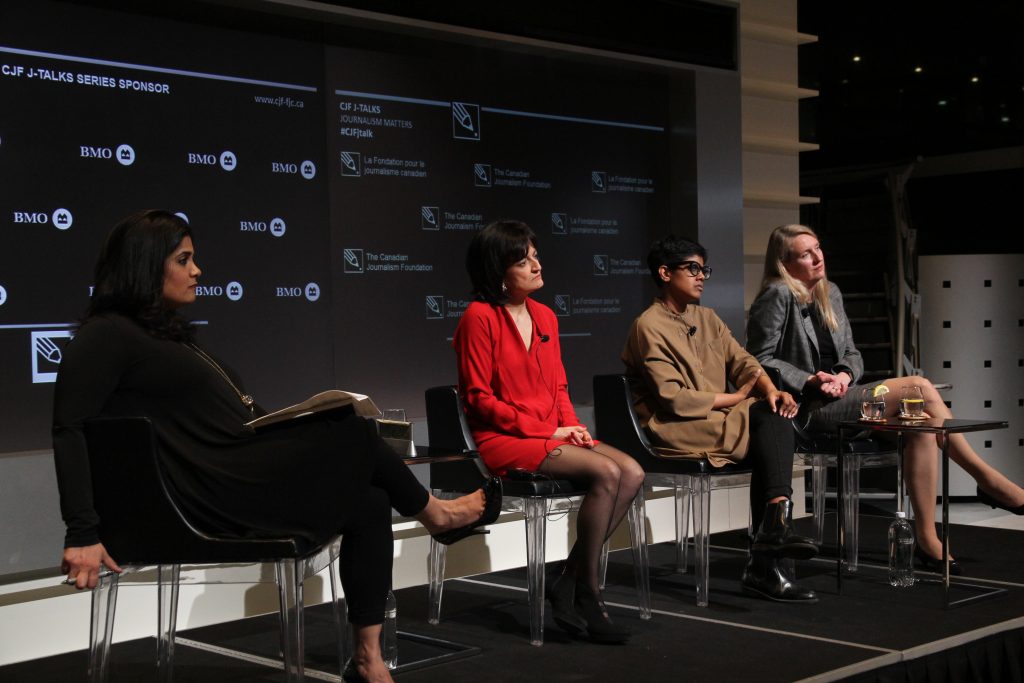
BY SAMANTHA MOYA
In a room of about 70 people, most of whom were women, Manisha Krishnan from Vice, Heather Mallick of the Toronto Star and the Globe and Mail‘s Janet McFarland discussed their jobs in journalism and the harassment that comes with it.
The event, called No Safe Space: Harassment of Women in Media, featured a panel moderated by Piya Chattopadhyay from the CBC, on the night before International Women’s Day. The talk, at Toronto’s TMX Broadcast Centre, at times was heavy but it was also empowering, carried by the achievements of these successful female journalists.
These journalists receive disturbing messages regularly via mail, email, tweets and phone calls. It is a constant bombardment because they, as journalists speak up about issues. They then become a target for those who disagree. Mallick says she will not open mail unless its from a trusted sender. She no longer tweets, or answers the phone in the news room, saying the problem has “isolated me as a journalist.”
Manisha Krishnan once received a voicemail from someone whispering, “you’re gonna die.” This is just one of many from her list of examples of the harassment she receives. She writes about issues that some deem controversial, issues of sexism and racism that they feel they must respond to. “I shouldn’t actually have to deal with this as part of my job,” Krishnan says.
Janet McFarland admits she, as a reporter and not a columnist, doesn’t receive nearly as much harassment as her colleagues on the panel. It was only after she had written about women’s issues that she began to be harassed.
Of the three news outlets represented on the panel, only the Globe and Mail has a comment section. McFarland said the Globe encouraged reporters to engage, to “create community” and respond to comments. She didn’t, and most reporters didn’t, recognizing how it would likely subject them to more harassment.
Krishnan’s editor at Vice took her to lunch once when they recognized the toll this harassment might’ve had on her. “Just to check in,” Krishnan said. “We are told to report to editors on a case by case basis, take screen shots (of the messages).”
Although, this is not the common culture in newsrooms. At more traditional legacy media corporations, the culture of the newsroom is different. Mallick describes it as a, “1950s-style, males in newsroom. It’s awful and depressing . . . no one is encouraged to talk (about how they’re feeling.)”
The panel then took questions from the audience, including “How do we address this issue?” and “How can we stop it?” The concerned audience was filled with many women who work in different sectors of the media industry. The panel struggled to find one concrete solution but emphasized the power of peer support. “In broadcast when producers say ‘that sucks that that happened,’ that validation, recognition and understanding, it means a lot,” said Chattopadhyay.
The trolls online, endlessly commenting and harassing, they want to silence you, Chattopadhyay explained. She closed the talk encouraging the audience to not let that stop them and continue to “prioritize this issue.”
Chattopadhyay said, “We have to educate from within. Talk to someone tomorrow.”
